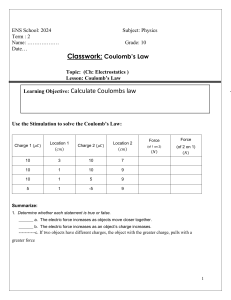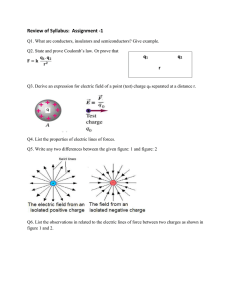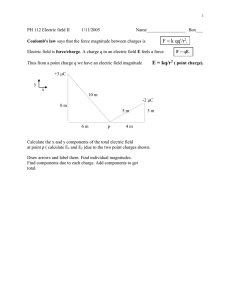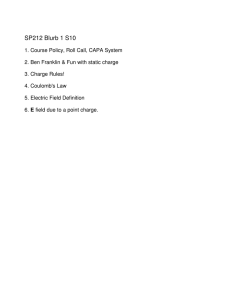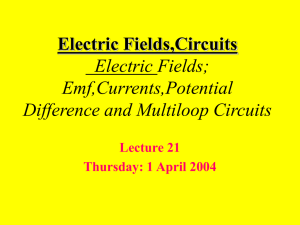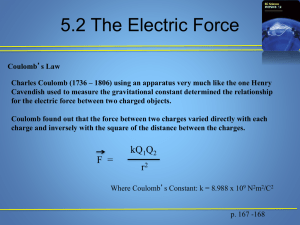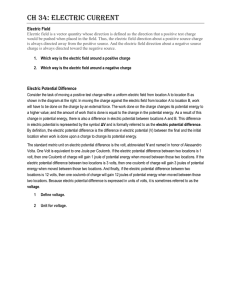Electric Potential & Potential Difference: Lecture Notes
advertisement
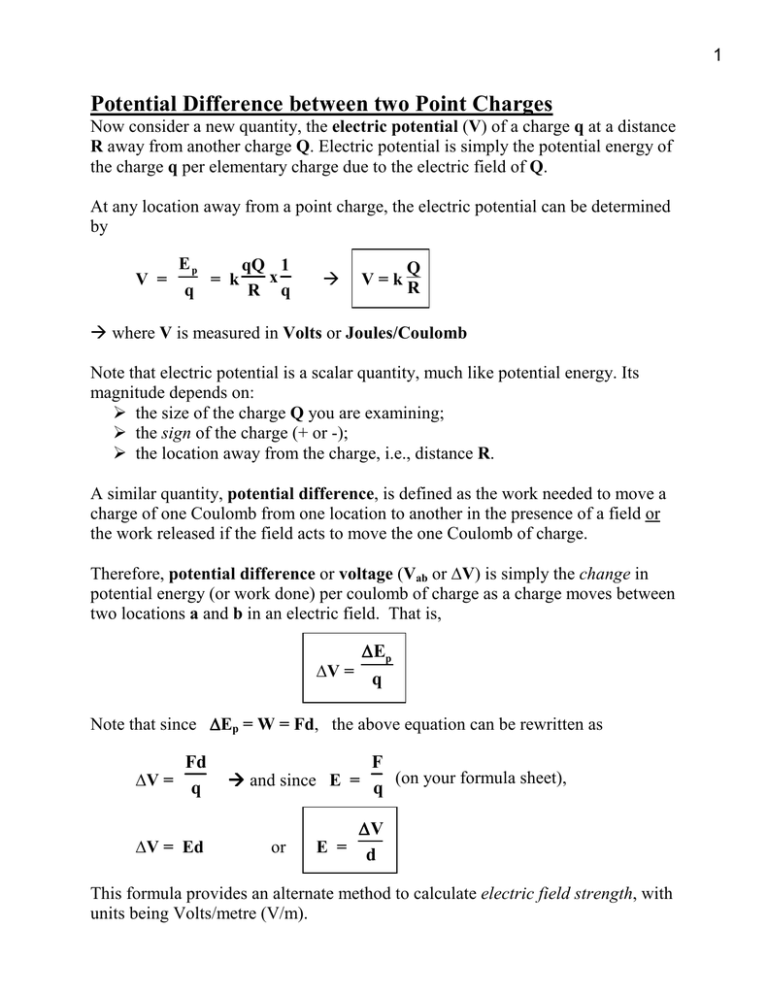
1 Potential Difference between two Point Charges Now consider a new quantity, the electric potential (V) of a charge q at a distance R away from another charge Q. Electric potential is simply the potential energy of the charge q per elementary charge due to the electric field of Q. At any location away from a point charge, the electric potential can be determined by V = Ep q = k qQ 1 x R q Q V=kR where V is measured in Volts or Joules/Coulomb Note that electric potential is a scalar quantity, much like potential energy. Its magnitude depends on: the size of the charge Q you are examining; the sign of the charge (+ or -); the location away from the charge, i.e., distance R. A similar quantity, potential difference, is defined as the work needed to move a charge of one Coulomb from one location to another in the presence of a field or the work released if the field acts to move the one Coulomb of charge. Therefore, potential difference or voltage (Vab or ∆V) is simply the change in potential energy (or work done) per coulomb of charge as a charge moves between two locations a and b in an electric field. That is, ∆ Ep ∆V = q Note that since ∆Ep = W = Fd, the above equation can be rewritten as ∆V = Fd q ∆V = Ed F and since E = q (on your formula sheet), or E = ∆V d This formula provides an alternate method to calculate electric field strength, with units being Volts/metre (V/m). 2 To find the potential difference between two locations a and b in an electric field: Q position a Ra position b Rb ∆V = Vab = Vb - Va Q where V = k R ∆V = Vab = k Q Q -k Rb Ra Remember, to get work done to move another charge q from Q, use: W = ∆Ep = q∆V Example 11. What is the potential difference between the two positions in the following example? Q = 20µ µC position a 0.50 m position b 3.0 m (see Electrostatics Ex 11 for answer) 3 Example 12. Re-examine the diagram from Example 8 (see below). Find the electric potential at point B due to the other charges. Hint: remember, electric potential is a scalar quantity. No vector analysis is needed here. A + 30 µC 20 cm C B 60 cm + 70 µC (see Electrostatics Ex 12 for answer)
